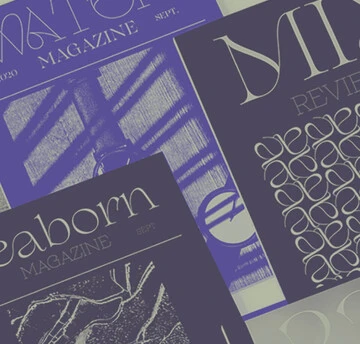Fonts & Accessibility

- Monsido, 2022
With more companies focusing on DE&I initiatives, it’s essential to include people with disabilities in those policies. One easily overlooked aspect of this is the accessibility of your digital properties for people with various visual abilities. This article will outline how digital accessibility practices and DEI policies are interconnected, and how fonts contribute to a digital experience that is accessible to all.
In today’s digital world, no Diversity & Inclusion strategy would be complete without a section devoted specifically to website accessibility; Factually speaking, it only makes sense:
- One in six people live with at least one disability—making up the largest minority group (WHO).
- The average individual spends around 8% of their life with a disability if they are lucky enough to live somewhere where life expectancy is over 70 years—and more so where life expectancy is shorter (WHO).
- Many countries prohibit disability discrimination. In the US, the number of web accessibility lawsuits doubled in the last 5 years from 2,313 to over 4,455—surpassing annual projections by Q3 (Forbes).
- Adults living with a disability depend on technology more! Some 81% own a computer compared with the 62% of desktop-owning adults not living with a disability (Pew Research Center).
- Also, everyone benefits from accessibility tools, from zoom-in functions to subtitles (Perkin’s Access).
Add all this up, and you get the most important reason for ensuring accessible digital presence: it is simply the right thing to do.
Rooted in the Civil Rights Movement, the Americans with Disabilities Act 1990 (ADA) and the ADA Amendments Act 2008 (ADAAA) expanded civil rights protections by making it illegal to discriminate ‘on the basis of a disability’. This had a powerful intersectionality effect as the majority of people living with disabilities and facing greater difficulties are women, the elderly and poorer communities with less medical access. In the digital dimension, the requirement to meet the Web Content Accessibility Guidelines (WAG) standards has had a positive global impact by providing opportunities to underrepresented groups worldwide.
Lily Zheng, Harvard Business Insider, 2020
The Black Lives Matter and #MeToo movements were instrumental in raising the bar from Corporate Social Responsibility CSR to Corporate Social Justice (CSJ). One key change involves courts putting greater emphasis on impact rather than intention when deciding on civil rights violations by organizations discriminating against underrepresented groups. And in the digital sphere, the pandemic accelerated digital dependence through remote working policies, thereby magnifying the virtual barriers restricting people with disabilities from navigating online resources like anyone else.
Ironically, looking out for the needs of people with visual impairments is too often a blind spot for organisations. With more than half of home pages failing basic website accessibility requirements and estimates that the population of people experiencing blindness and visual impairment will double by 2030 (Prevent Blindness America), now is the time to start designing assets accessibly from the start, rather than having to overhaul or adapt an inaccessible website after launching it. Decision makers must ensure future project pitches consider the range of accessibility needs their markets require, and fonts are no exception.
Some Font Accessibility Do’s and Don’ts include:
- Do use underline in addition to color to indicate a link. Don’t use color alone to indicate a link so people with color vision deficiency can navigate the references easily. Read more on accessible contrast here.
- Do ensure the contrast ratio is perceivable. Don’t let it below what is perceivable for people with moderately low vision. Read more on accessible contrast here.
- Do ensure your visual assets use live text. Don’t embed text into images, use live text so that visual assets are screen-reader friendly. Read more on accessible text formatting here.
- Do ensure the font used in printed assets can be read by machines used by people with disabilities. Read more on machine accessibility here.
- Do ensure the fonts used in digital assets are readable and promote fonts that are designed with visual diversity in mind Read more on fonts designed for accessibility here.
When it comes to enforcing the ADA, the onus lies not with the government, but with wronged individual and the judges deciding on their cases. This puts a big responsibility on the minority of disabled people with the time and means to pursue legal action, making it even more of a moral imperative for organisations to proactively ensure accessibility rather than wait for a lawsuit. Since the 1990s, there has been a steady rise in accessibility lawsuits, but since the pandemic, there has been a steady rise in lawsuits for ADA violations across digital assets specifically.
Recent cases include:
- Walmart faced a class action suit for not making their website screen reader-compatible
- Rite Aid Corporation (pharmacy chain) settled vaccine registration web accessibility lawsuit
- Apple faced a lawsuit for violating website accessibility guidelines
EPIC Assist, 2021
Beyond illegal, it is illogical and irrational to design environments with barriers that exclude 1.3 billion people with diverse visual, audio and motor needs, but most importantly, it is insensitive. This applies to both physical and digital environments but because of the internet’s global reach, web accessibility is an area of corporate strategy that demands more urgent attention. Who knew fonts and formatting had the power to both visually and immediately demonstrate your commitment to Diversity & Inclusivity?











